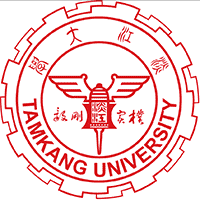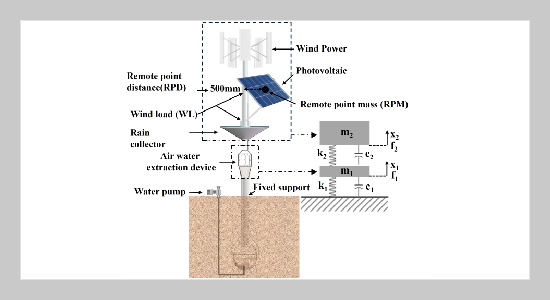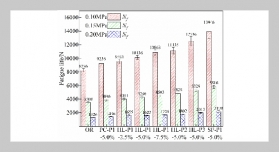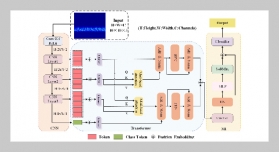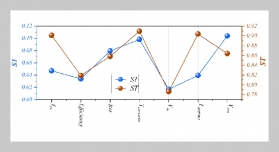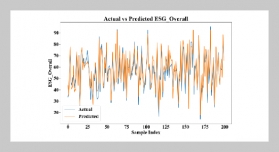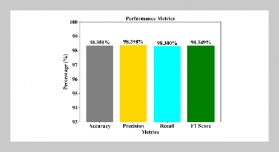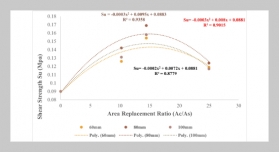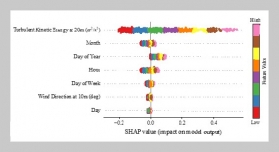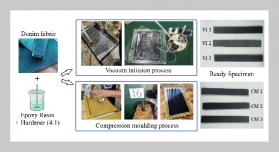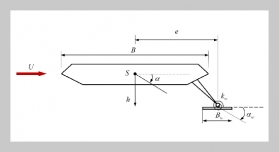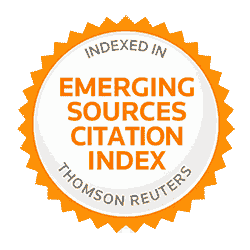- [1] P. D’Odorico, D. D. Chiarelli, L. Rosa, A. Bini, D. Zilberman, and M. C. Rulli, (2020) “The global value of water in agriculture" Proceedings of the National Academy of Sciences of the United States of America: DOI: 10.1073/pnas.2005835117.
- [2] B. Nogrady, (2024) “How to address agriculture’s water woes" Nature: DOI: 10.1038/d41586-024-02037-w.
- [3] Y. Zou, X. Duan, Z. Xue, M. E, M. Sun, X. Lu, M. Jiang, and X. Yu, (2018) “Water use conflict between wetland and agriculture" Journal of Environmental Management: DOI: 10.1016/j.jenvman.2018.07.052.
- [4] J. W. Knox and K. Weatherhead, (2024) “Catchment Scale Challenges for Water Resources Management: As sessing ‘Reasonable’ Peak Needs for Irrigated Agriculture in a Humid Climate" Hydrology: DOI: 10.3390/hydrology11030033.
- [5] W. Susanne, G. Morten, B. Cors Van Den, B. Sandra, S. Frode, F. Luke, S. Nicolas, C. Rozalija, A. Helle Tegner, B. Antti, and R. Marleen Van, (2024) “Pro tection of water resources from agricultural pressures: Embracing different knowledge domains in governance approaches" Environmental Policy and Governance: DOI: 10.1002/eet.2136.
- [6] W. Travis and C. B. Thomas, (2019) “The importance of municipal and agricultural demands in future water short ages in the United States" Environmental Research Letters: DOI: 10.1088/1748-9326/ab2b76.
- [7] W. Bingfang, T. Fuyou, Z. Miao, P. Shilong, Z. Hong wei, Z. Weiwei, L. Junguo, E. Abdelrazek, and L. Yuming, (2022) “Quantifying global agricultural water appropriation with data derived from earth observa tions" Journal of Cleaner Production: DOI: 10.1016/j.jclepro.2022.131891.
- [8] A. Ebrahimivand, F. Hooshyaripor, S. Rezaei Gharehaghaj, S. Razi, M. M. Salamttalab, M. Kolahi, and R. Noori, (2023) “Satellite-Based Monitoring of Growing Agricultural Water Consumption in Hyper-Arid Regions" Water: DOI: 10.3390/w15223880.
- [9] C. Singla, R. Aggarwal, and S. Kaur, (2024) “Agri cultural policies for mitigating groundwater depletion in central Punjab" Groundwater for Sustainable Devel opment: DOI: 10.1016/j.gsd.2024.101117.
- [10] S. Vishal, S. Pushpendra Kumar, J. Sanjay Kumar, J. Sharad Kumar, C. Christophe, and H. Tim, (2022) “Examining evaporative demand and water availability in recent past for sustainable agricultural water management in India at sub-basin scale" Journal of Cleaner Production: DOI: 10.1016/j.jclepro.2022.130993.
- [11] Z. Ladányi, K. Barta, V. Blanka, and B. Pálffy, (2021) “Assessing Available Water Content of Sandy Soils to Support Drought Monitoring and Agricultural Water Management" Water Resources Management: DOI: 10.1007/s11269-020-02747-6.
- [12] P. Saccon, (2018) “Water for agriculture, irrigation man agement" Applied Soil Ecology: DOI: 10.1016/j.apsoil.2017.10.037.
- [13] L. Bonfiglioli, I. Urbanaviˇci¯ut˙e, and M. A. Pagnotta, (2024) “Durum wheat (Triticum turgidum L. var. durum) root system response to drought and salt stresses and genetic characterization for root-related traits" Frontiers in Plant Science: DOI: 10.3389/fpls.2024.1362917.
- [14] R. López-Urrea, J. M. Sánchez, F. de la Cruz, J. González-Piqueras, and J. L. Chávez, (2020) “Evapo transpiration and crop coefficients from lysimeter measure ments for sprinkler-irrigated canola" Agricultural Water Management: DOI: 10.1016/j.agwat.2020.106260.
- [15] B. Valliyodan, H. Ye, L. Song, M. Murphy, J. G. Shan non, and H. T. Nguyen, (2017) “Genetic diversity and genomic strategies for improving drought and waterlog ging tolerance in soybeans" Journal of Experimental Botany: DOI: 10.1093/jxb/erw433.
- [16] R. Peeters, H. Vanderschaeghe, J. Rongé, and J. A. Martens, (2021) “Fresh water production from atmospheric air: Technology and innovation outlook" iScience: DOI: 10.1016/j.isci.2021.103266.
- [17] M. Wang, E. Liu, T. Jin, S.-U. Zafar, X. Mei, M.-L. Fauconnier, and C. De Clerck, (2023) “Towards a better understanding of atmospheric water harvesting (AWH) technology" Water Research: DOI: 10.1016/j.watres.2023.121052.
- [18] Z. Yaoxin and T. Swee Ching, (2022) “Best practices for solar water production technologies" Nature Sustain ability: DOI: 10.1038/s41893-022-00880-1.
- [19] T. Ming, T. Gong, R. K. de Richter, Y. Wu, and W. Liu, (2017) “A moist air condensing device for sustainable energy production and water generation" Energy Con version and Management: DOI: 10.1016/j.enconman.2017.02.012.
- [20] R. Peeters, H. Vanderschaeghe, J. Rongé, and J. A. Martens, (2020) “Energy performance and climate dependency of technologies for fresh water production from atmospheric water vapour" Environmental Science: Water Research & Technology: DOI: 10.1039/d0ew00128g.
- [21] Z. Vladimír, M. Tomáš, and Š. Boˇrivoj, (2024) “The apparatus for atmospheric water harvesting in an arid climate- Prototype design and testing in laboratory conditions" Energy: DOI: 10.1016/j.energy.2024.133692.
- [22] J. Yao, X. Wang, J. Zhu, B. Wang, and J. Niu, (2021) “Experimental Investigation of a Novel Extracting Water System from Air by Soil Cold Source" Mathematical Problems in Engineering: DOI: 10.1155/2021/2740081.
- [23] M. de Vega, M. Venegas, and N. García-Hernando, (2022) “Viability on the desorption and air condensation of water in a compact membrane-based microchannel desorber-condenser for cooling applications" Energy Conversion and Management: DOI: 10.1016/j.enconman.2022.115919.
- [24] P. Dehghani, H. Ami Ahmadi, S. M. Hosseinalipour, and H. Akbari, (2024) “Impact of relative humidity, temperature difference, and surface type on humid air condensation heat transfer" International Journal of Thermal Sciences: DOI: 10.1016/j.ijthermalsci.2024.109168.
- [25] Y. You, G. Wang, C. Guo, and H. Jiang, (2020) “Study on mass transfer time relaxation parameter of indirect evaporative cooler considering primary air condensation" Applied Thermal Engineering: DOI: 10.1016/j.applthermaleng.2020.115958.
- [26] A. R. Al-Badri, A. Bär, A. Gotterbarm, M. H. Rausch, and A. P. Fröba, (2016) “The influence of fin structure and fin density on the condensation heat transfer of R134a onsingle finned tubes andintubebundles"International Journal of Heat and Mass Transfer: DOI: 10.1016/j. ijheatmasstransfer.2016.04.087.
- [27] A.Glushchuk,C.Minetti,H.Machrafi,andC.S.Iorio, (2017) “Experimental investigation of force balance at vapour condensation on a cylindrical fin" International Journal of Heat and Mass Transfer: DOI: 10.1016/j.ijheatmasstransfer.2017.01.067.
- [28] Y.-h. Gu, Q. Liao, M. Cheng, Y.-d. Ding, and X. Zhu, (2020) “Condensation heat transfer characteristics of moist air outside a three-dimensional finned tube" International Journal of Heat and Mass Transfer: DOI: 10.1016/j.ijheatmasstransfer.2020.119983.
- [29] J. Y. Ho and K. C. Leong, (2020) “Effect of fin pitch on the filmwise condensation of steam on three-dimensional conical pin fin arrays: A comparative study" International Journal of Heat and Mass Transfer: DOI: 10.1016/j.ijheatmasstransfer.2020.119328.
- [30] Y.-J. Jang, D.-J. Choi, S. Kim, M.-T. Hyun, and Y.-G. Lee, (2017) “Enhancement of Condensation Heat Transfer Rate of the Air-Steam Mixture on a Passive Condenser System Using Annular Fins" Energies: DOI: 10.3390/en10111777.
- [31] A. Miyara, Y. Otsubo, S. Ohtsuka, and Y. Mizuta, (2003) “Effects of fin shape on condensation in herring bone microfintubes" International Journal of Refrigeration: DOI: 10.1016/s0140-7007(02)00154-8.
- [32] R. Poškas, A. Sirvydas, M. Salem, P. Poškas, and H. Jouhara, (2024) “Experimental investigation of humidified air condensation in different rows of serpantine heat exchanger– Cooling water flow rate effect" Thermal Science and Engineering Progress: DOI: 10.1016/j.tsep.2024.102814.
- [33] X. Liu, J. Yu, and G. Yan, (2016) “A numerical study on the air-side heat transfer of perforated finned-tube heat exchangers with large fin pitches" International Journal of Heat and Mass Transfer: DOI: 10.1016/j.ijheatmasstransfer.2016.04.081.
- [34] N.P.OrtizandS.R.Rao,(2024)“Compactrapidcycling fuel-fired atmospheric water harvesting device for all-day water production" Cell Reports Physical Science: DOI: 10.1016/j.xcrp.2024.102115.
- [35] J. Wang, Y. Suo, H. Lou, Y. Ye, and Z. Zhang, (2024) “Optimization of a thermoelectric cooler-based system for atmospheric water production in terms of temperature of condensing surface" Case Studies in Thermal Engineering: DOI: 10.1016/j.csite.2024.104000.
- [36] M. Zhang, C. Xie, T. Li, M. N. Hossain, and G. Zhao, (2024) “Wind-Induced Response Analysis and Fatigue Life Prediction of a Hybrid Wind Turbine Tower Combining an Upper Steel Tube with a Lower Steel Truss" Buildings: DOI: 10.3390/buildings14051441.
- [37] A. K. Khan, T. R. Shah, A. A. Khosa, and H. M. Ali, (2023) “Evaluation of wind load effects on solar panel support frame: A numerical study" Engineering Analysis With Boundary Elements: DOI: 10.1016/j.enganabound.2023.05.016.
- [38] A. Ghatei-Kalashami, S. Zhang, M. Shojaee, A. R. H. Midawi, F. Goodwin, and N. Y. Zhou, (2021) “Failure behavior of resistance spot welded advanced high strength steel: The role of surface condition and initial microstructure" Journal of Materials Processing Technology: DOI: 10.1016/j.jmatprotec.2021.117370.
- [39] D. I. Malliouri, C. D. Memos, T. H. Soukissian, and V. K. Tsoukala, (2021) “Assessing failure probability of coastal structures based on probabilistic representation of sea conditions at the structures’ location" Applied Mathematical Modelling: DOI: 10.1016/j.apm.2020.08.001.
- [40] H. Xudong, S. Shuli, C. Pu, and L. Tao, (2023) “A Multi-Scenario analysis method for collapse risks due to initial local failure of building structures" Structures: DOI: 10.1016/j.istruc.2023.105479.
